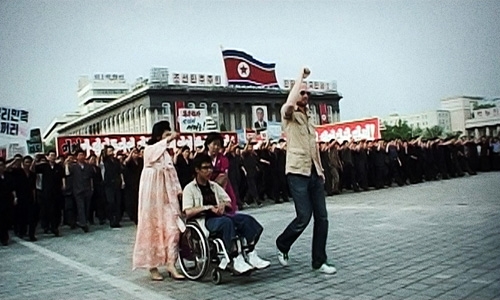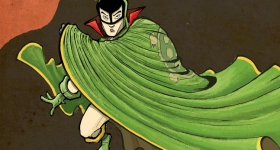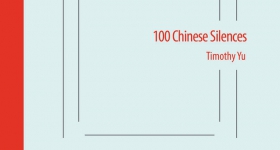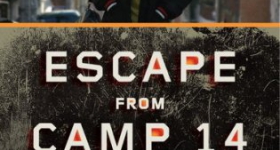From March 17 to 20, the fifth annual Korean American Film Festival New York (KAFFNY) will screen a strong crop of shorts and feature-length movies. But in what sense are all these films “Korean American”? Most but not all were created by Korean Americans. Some deal with ostensibly Korean American diasporic subjects. Others are straight-up Korean, that is, foreign, films.
Categorization is an issue for every ethnic, or even thematic, film festival (or, in the case of the visual arts, every biennale). Each festival's name -- be it KAFFNY or SAIFF or SFIAAFF or AAIFF -- proclaims an organizing principle in flux. Thus, KAFFNY, nonprofit and indie-leaning, started in 2007 with shorts by Korean Americans and has branched out over the years to include Korean independent cinema, films by non-Koreans on Korean-ish topics, and the work of diasporic Koreans outside the US. As KAFFNY Co-Director Dave Kim puts it, “We’re trying to keep an open mind, to see Korean America as a starting point, not an end.”
Fortunately, as long as the films are good, none of this really matters. This year’s KAFFNY is strongest in documentaries, mostly due to its retrospective filmography of Dai Sil Kim-Gibson (pictured above). I’m a fan of her movie (and book) on the Korean comfort women, Silence Broken, but look out for her two documentaries on the L.A. Riots, Sa-I-Gu and Wet Sand. On Saturday, March 19, in conjunction with the screenings, Kim-Gibson, collaborator Charles Burnett (creator of the legendary 1977 film Killer of Sheep), and the mother of a Korean American teenager killed during the Riots will discuss the impact of that 1992 violence. I’m also excited for The House of Suh, Iris Kim’s documentary about a brother who murders his sister’s fiancé at her bidding.
In terms of narrative features, I recommend Kim Young Nam’s The Boat, a Korean-Japanese gangster film with a touch of sweetness, and Peter Bo Rappmund’s psychohydrography (pictured above), which uses new photographic methods to trace California water from mountain to sea. Joan Didion would be proud. Just before Rappmund’s film, on opening night, DJ Spooky, Okkyung Lee, and Sean Lee will live-score the early Korean film Madame Freedom.

KAFFNY has lined up about two dozen short films, some as part of a shorts competition. I love the abstract animation Heart, by Erick Oh (funded in part by The Simpsons’ Matt Groening), in which shape-shifting figures wrangle for an elusive pink heart, their movements set to a contemporary classical score. The autobiographical art-short Daddy Called Me A Snake, by Sun Young Kim, is as rhythmic and riveting as a Heavy Industries piece, even as it tells a disastrous family history. Also check out Jung Chul’s Apple, a comic, bathetic glimpse at the symbiosis between a Korean housewife and her 20-something stepdaughter.
The enigma of North Korea comes to the festival via three very different movies. The first, Centre Forward, a soccer-themed classic from 1978, is double-billed with Red Chapel (pictured above), the Sundance winner about three Danish comedians' sojourn to North Korea -- à la Ali G. KAFFNY will also screen John Arlotto’s short Deface, featuring James Kyson Lee of Heroes, which tells the story of a North Korean factory worker who rages against the regime by vandalizing propaganda posters.
Find KAFFNY at the Chelsea Clearview Cinemas, with additional events at White Box gallery on the Lower East Side. Susie Lim, who co-directs both the festival and White Box, says, "We’re excited to show films in a gallery space as well as the theater. We’re creating a platform that doesn’t exist, for fine artists as well as filmmakers."
(Hyphen will report again on KAFFNY in a couple of weeks, as the festival gets underway.)










Comments